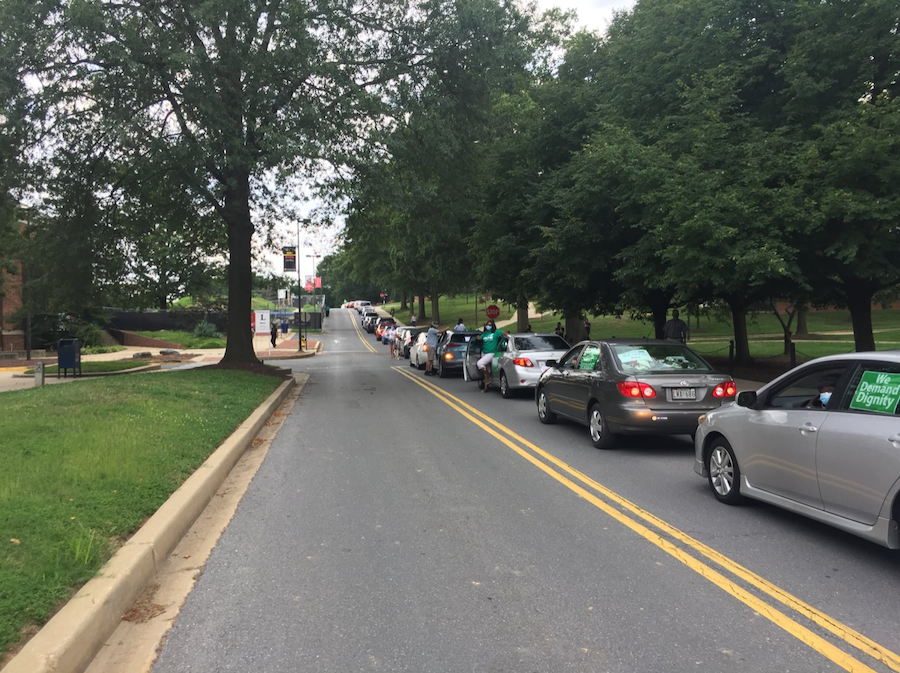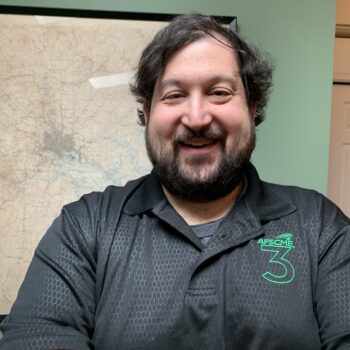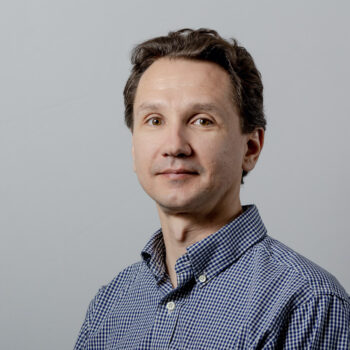Gliny Gonzalez was anxious. It was late May, and the University of Maryland, College Park — the flagship institution of the University System of Maryland — had just called her back to her job as a Residential Facilities Housekeeper. The university wanted staff like Gliny to clean up after students returning to retrieve their belongings left behind during the abrupt campus shutdown in March. COVID-19 case numbers in Maryland were still high — and the highest case count was in Prince George’s County, where the campus is located. Despite this, and despite the stay-at-home order in place, Gliny’s supervisor told her that she was required to come to work.
Reporting to work for the first time in two months, Gliny saw students and their families coming onto campus from all over the country without being screened. Many of them were not wearing masks. Gliny and her fellow AFSCME members were tasked with cleaning the dorm rooms immediately after students removed their furniture and clothes, making social distancing nearly impossible.
Gliny called her union representative. It soon became clear that management had fooled her and her co-workers. Her assignment was voluntary, according to the director of Residential Facilities, but managers and supervisors cajoled, misrepresented, and threatened frontline workers into reporting. Gliny stayed home the next day, but she soon began noticing symptoms of COVID-19. She was hospitalized days later.
So began AFSCME’s fight over the health and safety of workers at public universities in Maryland. Along the way, the fight became about much more: the neoliberal tendencies at the heart of this public institution.
Picking a fight with the university in the middle of a pandemic posed its own challenges. Without the ability to utilize our traditional model of driving members to in-person meetings or actions, the union struggled with how to function in an institution composed of compartmentalized departments. But necessity is often the mother of invention. We adapted, using new tools and communication methods to reach and mobilize our members. Hustling (mass text messaging), social media, interactive online petitions, and email tools provided the means to target administrators with our demands, while improving our data collection methods.
These tools were developed to help us put out daily labor-management fires, but they have also facilitated our organizing work: building our membership, developing a structure that will be more responsive to workers’ concerns moving forward, and strengthening our coalitions. Most importantly, the agility inherent in these new methods will allow us to more quickly fight back against an institution whose rosy public rhetoric of “we’re all in this together” hides its disregard for the health and safety of the people who operate the university.
Background
The University of Maryland, College Park (UMCP) is a top tier public research university with a 41,000-person-strong student body. It is also a major public corporation, with an operating budget in excess of two billion dollars per year. The university is the second-largest employer in Prince George’s County, behind Andrews Air Force Base. UMCP’s corporate status is often on proud display. At yearly legislative oversight hearings, UMCP boasts that it is “Mpowering” the economy by providing returns on investment. The University System of Maryland, which oversees twelve campuses across the state, will often point out that system presidents are technically the CEOs of their respective institutions — and should thus be afforded wide latitude when implementing (or, as is more often the case, ignoring) collective bargaining agreements on campuses.
AFSCME Local 1072 represents 3,400 employees, virtually all hourly and salaried employees not in management. This diverse group includes housekeepers, groundskeepers, administrative assistants and coordinators, tradespeople, agricultural workers, and healthcare professionals working at UMCP or its affiliates. The union has been a force on campus since the 1970s, when workers first attempted to unionize. With other state employees, university workers were stymied for decades by their lack of bargaining rights. Over time, we chipped away, winning statutory rights in the 1980s and finally winning collective bargaining in the early 2000s.
Maryland’s collective bargaining laws remain relatively weak, however. Our campuses have only ever been open shops. Not only is it illegal for public employees to strike, but a work stoppage can dissolve a union contract. In spite of these obstacles, AFSCME Local 1072 has built a strong core of activists across campus, particularly among the Latina housekeepers in dormitories and academic buildings but also among tradespeople and salaried office workers across campus. Prior to the pandemic, we had built leaders primarily in the non-exempt hourly unit. We fought for and won English language literacy classes for our Spanish and Haitian Creole-speaking members. We had more recently been working to build deeper leadership in the exempt salaried unit by organizing around rudimentary teleworking rights as well as just cause (which we won through the legislature April 2019).
While it is arguably axiomatic that management will always have more power relative to labor, Maryland’s relatively weak labor laws make this doubly true in our state. When the pandemic hit, campus administrators engaged in a variety of stonewalling and obfuscating tactics. They refused to turn over public documents or work on any protocols with AFSCME. They would not answer basic questions in labor-management meetings about how work would get done on campus or who would even be working at the height of the outbreak. They hid management-created policy handbooks from shop stewards and set up reopening committees that excluded virtually all frontline workers. Most concerning to us, they refused to notify union officials about COVID-19 outbreaks and infections among our membership. In spite of the fact that the university is located in the most COVID-ravaged jurisdiction in Maryland, management took worker concerns “under advisement.” They demanded that we provide details on specific incidents rather than acknowledge that these were workplace-wide issues requiring an institutional response — thus tying the union up in problem-solving individual issues rather than demanding collective solutions.
The union had difficulty getting even the most basic information from campus administrators. Who was being asked to report to campus? Which workers were considered essential? How were they being paid? How much PPE was on hand? In almost-daily calls with management, AFSCME extracted information and repeated worker concerns. In spite of this dialogue, two facts emerged: directives from campus leadership were not reaching all workers, and in cases where they were, those directives were not being implemented consistently by supervisors. This put our workers at risk.
Members would send us memos, department, and division emails directly impacting our membership that were never bargained or even discussed with AFSCME. It became clear that we needed to establish better lines of communication with our own members in order to collect information, pass on what we learned, verify the accuracy of management’s answers, and hit back against the administration’s idiocy.
We quickly established regular conference calls with our core group of activists. We also distributed surveys via email in order to collect boots-on-the-ground information that we could use in our negotiations with management. In addition, we developed a broad and consistent digital strategy, starting with email outreach. Every email communication AFSCME sends has three consistent components:
-
An updated summary of union and management negotiations
-
An ask of the recipient to take action — like filling out a survey, contacting an elected official, contacting the campus administration, or making a post on social media
-
The link to our membership signup
Using this model, we were able to raise awareness of our issues, cultivate a cadre of identified activists, and organically increase our membership.
After some time, using survey and email respondents for hot lists, we ramped up one-on-one followup. We steadily moved most of our membership sign-ups to an online form, and saw an increase in new members, primarily in our exempt salaried unit (these are the workers who are in front of their computers most of the day and experiencing more conflict with their department and administration than ever before). This increased participation from new members and activists led to a marked increase in meeting participation. It soon became clear that telephone conference calls with dozens of participants were not going to provide the conversational style people wanted. AFSCME invested in technologies like Zoom to handle the demand so that people across campus actually saw each other instead of talking into the more chaotic abyss of a conference call. These Zooms included campus-wide activist meetings but also more targeted meetings that allowed member leaders to identify particular concerns by job or by department. Though these Zoom meetings have been great, they are not a long-term replacement for in-person organizing. We are not converting employees into members at the same rate we would in one-on-one conversations.
Escalations and Pivots
These efforts helped to keep our membership informed and engaged, but management continued to stonewall. When Gliny and other housekeepers were told to report to work in May, Local 1072 learned about the student move-out plan from the housekeepers, who were provided scant details, and from a local newspaper. Like Gliny, many of our members reported to work after months of administrative leave because they believed that, if they didn’t, they would lose their jobs.
As soon as AFSCME learned that housekeepers were being told to return to campus, we rapidly contacted those workers via phone, text, and email to advise them that they were within their rights to decline to work. We also issued a demand to bargain over the effects of the university’s COVID-19 health and safety plan.
This led to another example of UMCP’s core neoliberal tendencies: when the union pushed back and members didn’t show up to work, the university used public money to hire a high-priced, anti-union law firm, Baker Hostetler. In a series of email exchanges, UCMP’s outside counsel claimed that, by informing workers of the voluntary nature of the student move-out assignments, the union was encouraging a work stoppage. Through counsel, the university refused our demand to bargain, adopting the position that health and safety rules fall exclusively within management’s purview. This absurd notion compelled our leaders to file unfair labor practice charges with the state labor board in July.
A Boiling Point
July also brought triple digit heat and humidity, and management directed much of our blue-collar staff to work in buildings without air conditioning. Members quickly became sick with heat-related illnesses. Some were hospitalized. We purchased several digital thermometers and gave them to AFSCME activists who in turn distributed them to workers across campus to document the dangerous conditions. Members sent photos of themselves working in 90-degree-plus heat with 90 percent humidity. AFSCME then posted the photos to Twitter and asked allies (alumni, students, non-profits) to contact the new president to demand they remove staff from the heat. Inundated with messages from staff, students, and alumni, the new president soon met our demands.
AFSCME also invested in efforts to develop new data, new contacts, and new activists. As a public university, most worksite data should be available through public information act requests or bargaining information requests. However, management had been effectively breaking the law by denying it to us for over a year. With increased scrutiny and public pressure from our members the union finally obtained over 38,000 records with accurate workplace emails and other data that included bargaining unit members, faculty, graduate students, and others.
Armed with this trove of contact information, we went to work. We wanted to better understand what the broad community of people at the university felt, what they feared, and what would spur them to act. AFSCME created and emailed surveys about telework and campus reopening plans, which thousands of respondents completed. The results revealed widespread fear and discontent throughout the university system, particularly within the ranks of our salaried employees who, despite being able to telework, were being called back to campus.
The survey gave us over one thousand hot leads on people who “wanted to take action” and those who wanted to join the union. Leaders and organizers followed up to recruit new members. We also released survey results to the press to legitimize union positions, changing the dynamic whereby the university refuted individual worker anecdotes with official data. In addition, these survey results gave the union a window into the faculty for the first time. Contacts made with professors have since resulted in direct support of workers through faculty-led petitions and confrontations with management.
The union further used digital tools to exploit the university’s Achilles heel — its obsession with its reputation. By becoming heavily engaged on social media, particularly Twitter, we were able to publicly counter the administration’s “everything is fine” narrative in real time. Our online engagement reached an inflection point when fighting to get workers out of the heat this summer; one of the shocking photos of a worker holding up a thermometer reading 99 degrees doubled our followers in one day. We have continued to birddog the administration online as it attempts to obscure the rising numbers of COVID infections on campus, even as more and more dorms get locked down.
Online engagement also strengthened the union’s dialogue with student groups and advocacy organizations. Student groups like Plumas, MaryPirg, and Student Labor Action Coalition have joined us at actions and pressed the administration at online/Zoom public forums, and students have begun to hammer the administration in the campus newspaper. We also deepened our relationship with CASA De Maryland, the largest immigrants’ rights group in Maryland, who joined us in calling out the administration this summer.
We made a point of pitching the union’s concerns to the press and elected officials. We had almost weekly calls with the state legislators who represent the area around campus. In turn, these legislators worked with us to advance mandatory COVID testing while pressing management to engage us more regularly, even joining us for bargaining sessions.
The university began to feel the pressure. In June, administrators unilaterally implemented proposals the union had made months before, such as translating employee communications into both Spanish and Haitian Creole. Suddenly, sufficient PPE began appearing, blue collar staff received trainings, and administrators began talking about COVID testing.
We were winning, but not by enough. We continued to pressure the administration on the ground. In September, AFSCME was able to secure a rare, off-session legislative oversight hearing on the USM’s COVID-19 response. While legislators were able to ask pointed questions of USM leaders, the most poignant moments resulted when the union conveyed that, even after months of demands of management, housekeepers like Gliny were still not getting sufficient PPE.
Throughout the summer, we held car caravans against our anti-worker Governor to fight looming budget cuts. In August, we deployed this same model at UMCP to flex our muscle on campus with our newly developed allies. The result of months of turnout calls, text chains, email blasts, and social media engagement was over seventy cars blocking traffic in front of the Main Administration building. We ran a thirty minute program with housekeeping staff, University Health Center workers, students, CASA activists and our Council 3 leadership. Because of the work we’d been doing with the press throughout the summer, the action was covered live on television.
The Future
Gliny Gonzalez eventually recovered from COVID-19. Still, for Gliny and other workers on campus, health and safety concerns persist. AFSCME can claim credit for mandatory worker testing, additional PPE, improved management communication, and increased labor-management dialogue. At present, in spite of the havoc the pandemic has caused to state and university budgets, we are negotiating a cost containment plan that protects 99.8 percent of our membership from any furloughs or salary reductions in the face of a $280 million budget shortfall. Management has acknowledged that the plan itself is the direct result of AFSCME’s pressure.
The takeaway is that, when dealing with an employer that seeks to constrain union rights and contain worker power, each success is the result of a constant, multi-pronged strategy of communication, outreach, and public pressure. Moreover, when the employer happens to be a public institution empowered with the broad discretion of a private corporation, then each prong of the strategy must center on a message highlighting the dissonance between the institution’s lofty rhetoric and the actual experience of workers. We have a story to tell that needs to be heard. Our members are tired of being put in harm’s way and exploited. Increasingly members are willing to step out of the shadows and speak out publicly to challenge the tightly cultivated image that UMCP has been nurturing for years.
Fighting for our members during the pandemic has shown us that a union can adapt to a world in which “people power” is not necessarily in person. By using existing digital technologies to their fullest potential, implementing new processes for communicating with our members and allies, and taking on campus actions that challenge management with workers’ experiences (backed by data), AFSCME has been able to remain agile and effective. When met with this enormous fight-or-flight moment, our members punched back. Our in-person and online actions have set us up to make a big push in the legislature to level the playing field and win a University System-wide contract that will help cure the inequity at UMCP and throughout the University System of Maryland.


